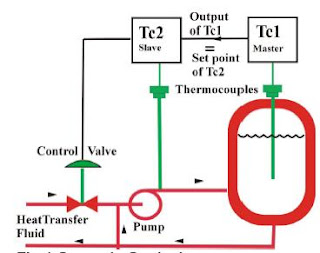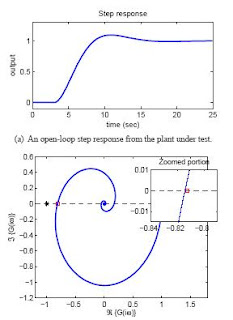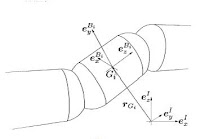This paper proposes a new design method of an I-PD controller. The I-PD controller is designed in a multirate system with fast control input and slow output sampling. In order to design PID parameters of the multirate I-PD controller, the multirate I-PD controller is designed based on a multirate generalized predictive control law. Since in the multirate system a control input is updated faster than a single-rate system with slow control input and slow output sampling, the control effect of the proposed multirate I-PD controller is greater than that of a conventional single-rate one. Finally in order to show effectiveness of the proposed method, simulation results are illustrated.
http://cat.inist.fr/?aModele=afficheN&cpsidt=17893327
An Adaptive Controller based on system Identification for plants with
uncertainties using well known Tuning formulas
Abstract
Adaptive control which adequately adjusts controller
gains according to the changes in plants, has become
attractive in recent years .The controller proposed in this
paper is tuned automatically with various tuning formulas
based on the results of frequency domain system
identification for the plant. The controller first estimates
the frequency response of the plant using FFT. The
controller gains are automatically tuned so as to minimize
the error between the open loop frequency response of
the reference model and that of the actual system at a few
frequency points. For the three example processes,
reference models are derived. The frequency responses
of the reference models and that of the actual processes
are obtained. The controller gains are determined by
applying the least squares algorithm .The responses of
the plants are verified in time domain and frequency
domain after tuning the I-PD controller.
Block diagram of an I-PD controller along with process
plant

http://www.icgst.com/acse/Volume6/Issue3/P1110626005.pdf
PI-D and I-PD Control with Dynamic Prefilters
In this lab you will be controlling the one degree of freedom systems you previously modeled using PI-D and I-PD controllers with and without dynamic prefilters.
the I-PD controller we have

http://www.rose-hulman.edu/Class/ee/throne/ECE-320%20Fall%202009/lab7a.pdf
DESIGN OF ROBUST POLE ASSIGNMENT BASED ON
PARETO-OPTIMAL SOLUTIONS
ABSTRACT
In this paper, a new design method for robust pole assignment based on
Pareto-optimal solutions for an uncertain plant is proposed. The proposed design
method is defined as a two-objective optimization problem in which optimization
of the settling time and damping ratio is translated into a pole assignment
problem. The uncertainties of the plant are represented as a polytope
of polynomials, and the design cost is reduced by using the edge theorem.
The genetic algorithm is applied to optimize this problem because of its
multiple search property. In order to demonstrate the effectiveness of the
proposed design method, we applied the proposed design method to a magnetic
levitation system.
I-PD control system

http://www.ajc.org.tw/pages/PAPER/5.2PD/PI-01-22.pdf
Study on the I-PD Position Controller Design for Linear Pulse Motor DrivesABSTRACT
In this paper, a brief discussion on I-PD position controller design for linear pulse motor drive is presented. The proposed method mainly focuses on the robusteness property of the controller, which is very important for this type of system in which the variation of external load affects plant parameters. It is considered in this paper that two types of controller design methods namely; Coefficient Diagram Method (CDM), and arbitrary Pole Assignment Method (PAM) are treated and compared them. It is shown in this paper that for the case of CDM, a stability index values are chosen such that the robust property of the controller is adequately sufficient for light and heavy load operation without excessively exciting the motor. For these stability index values and an equivalent time constant, which determines the speed of responese of the system, the closed loop pole locations are automatically fixed. For the case of PAM, the closed loop pole assignments must be iteratively tried to arrive at an acceptable response.
http://nels.nii.ac.jp/els/110000031056.pdf?id=ART0000357399&type=pdf&lang=en&host=cinii&order_no=&ppv_type=0&lang_sw=&no=1260926777&cp=

















